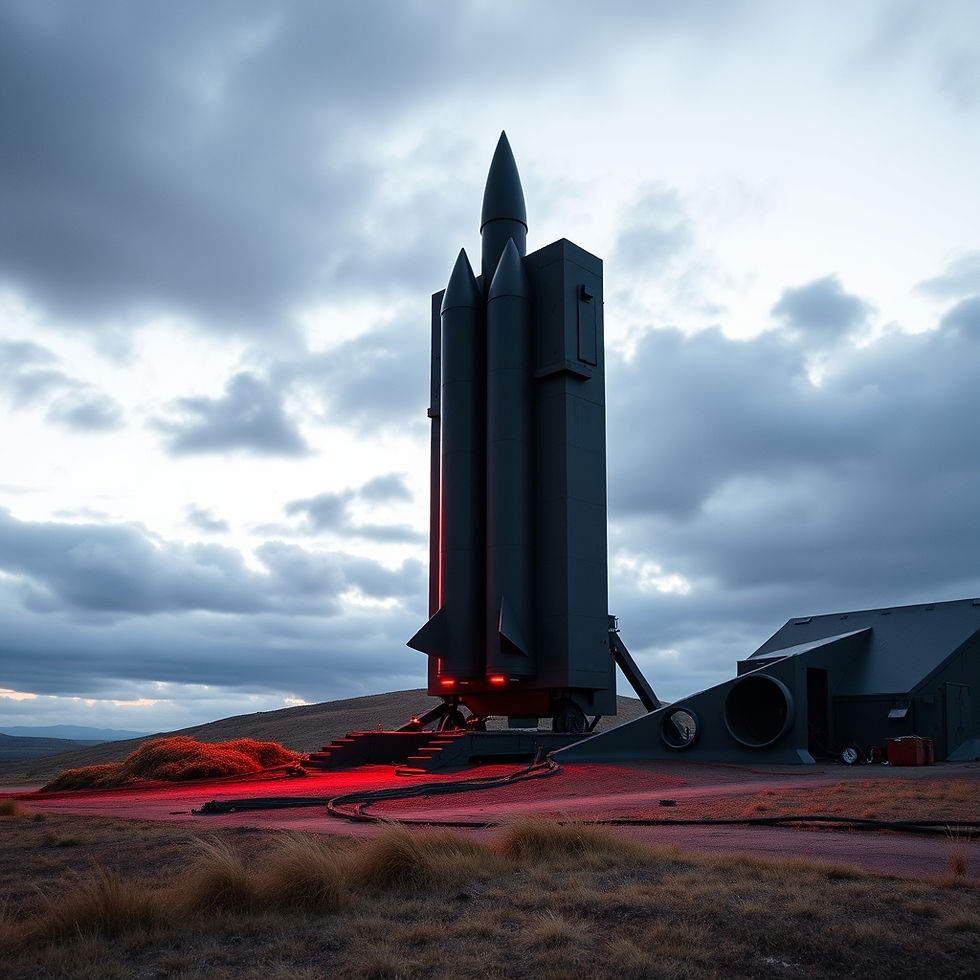Rocket Force: Pakistan’s Additional Layer in the Escalation Ladder
- Security Risks Research
- Sep 13
- 4 min read

Learning from the experience of India’s Operation Sindoor thrashing, Pakistan has rapidly planned to create a Rocket Force concentrating control of conventional tipped missiles under centralized command to meet the next challenge which could be faced in the near future.
Even as India’s Prime Minister Shri Narendra Modi has announced that the ‘nuclear bluff’ will not longer work in the Indo Pak escalation cycle, Islamabad has injected the Rocket force to meet the challenges likely to be faced from missile strike dominance by India.
On the eve of Pakistan’s 78th Independence Day, Prime Minister Shehbaz Sharif announced the formation of the Army Rocket Force Command (ARFC) with claimed, “modern technology and capability to strike the enemy from every direction”. “It will further enhance our conventional warfare capabilities,” Sharif said event in Islamabad.
Full Spectrum Deterrence & ARFC
Traditionally Pakistan has in recent years flagged Full Spectrum Deterrence as its first use nuclear doctrine. Use of battlefield or tactical nuclear weapons as the Nasr range approximately 60 kms is seen to deter India’s conventional escalation in the form of the much vaunted and now abandoned Cold Start Doctrine. This envisaged a wide front shallow penetration by India’s ground strike forces to respond to which Pakistan planned the use of tactical nuclear weapons.
Pakistan had rehearsed the same in multiple exercises in the past decade or so.
Yet when India struck the Jaish e Mohammad training base in Balakot in 2019 or the multiple terror HQs during Operation Sindoor some as deep inside Pakistan as Bahawalpur and Muridke Islamabad found limited options.
Pakistan’s counter response launched on successive nights of 07/08, 08/09 and 09/10 failed to cause the desired impact with strikes spread over almost the entire Indian Western front.
The realization that India had successfully created a layer of sub nuclear conventional response to control the escalation ladder between the two traditional adversaries came soon.
Pakistan could not exercise the tactical nuclear option given that India had restricted the strikes on known terror hubs of the Jaish E Mohammad and Lashkar e Tayyaba while conventional response provided India an opportunity for strikes on Pakistan air defence and air forces bases causing heavy losses.
Now with the ARFC likely to be based on a mix of long range rockets, MLRS and ground based cruise missile under a single commander it is envisaged that this could act as a deterrence.
Not just Operation Sindoor but recent wars in Ukraine as well as Gaza and Iran Israel have demonstrated that long range missiles apart from one way loitering armed drones have emerged as a new weapon of ‘terror,’ if not deterrence despite development of very capable air and missile defence systems by Israel such as the Iron Dome.
This lesson was not lost on Pakistan.
The aim is to adopt not just a retaliatory but a punitive posture by the Pakistan armed forces thereby hoping to deter an Indian response.
Organisationally, with Pak missile arsenal being under the Strategic Planning Division which controls the nuclear weapons, a conventional response was not feasible for Pak during Operation Sindoor, now ARFC is expected to provide greater flexibility.
The ARFC is expected to create a level of prevention on the lines of the anti-access/area denial (A2/AD) strategy of the People’s Liberation Army Rocket Force (PLARF) by being able to project a threat to India in a form that the Indian Armed Forces will be unable to prevent heavy losses.
Such a concept also creates an operational depth for Pakistan forcing India to deploy its missile assets beyond the striking range of the ARFC arsenal.
Profile and Capability of ARFC
For success, the ARFC will have to create both capability and capacity or standoff lethality in high numbers.
The ARFC is expected to primarily control short- to medium-range conventional missiles such as
Fatah-1 (range up to 140km) and Fatah-2 rockets (range between 250-400km), and Hatf-1 and Abdali, having ranges less than 500km (310 miles). Babur Land Attack Cruise Missile amongst others. The PLARF for instance is estimated to have approximately 2000 plus launchers and possibly thousands of missiles.
To develop a proportional arsenal Pakistan will have to inject considerable resources budgetary, technology as well as production.
Indian Response
India had planned to raise a Rocket Force, while there are no open source inputs of the armed forces having raised so with missiles such as BrahMos organised in regiments with the Army, Indian Navy and the Air Force having sea/air launched versions.
A range of missiles such as Pralay, Prahar are under development or operationally deployed while long-range multiple launch rocket system the Pinaka II guided is also under induction.
At the same time, India is investing in the Sudarshan Chakra – air and missile defence system announced by Prime Minister Modi on the Independence Day. This is envisaged to be on the lines of Israel’s Iron Dome and is under development.
Conclusion
With parallel developments of missile armoury and organisations as the ARFC the next Indo Pakistan “skirmish,” may be a missile war.
Given the densely populated Indo Pakistan border and Line of Control, prevention of civilian casualties will assume importance at least for India and target selection may remain restricted to the military.
A Sudarshan Chakra will provide India an advantage but possibly not a shield against a full barrage of Pak missiles in the near term.
What counters the nuclear armed neighbours develop now remains to be seen.



Comments